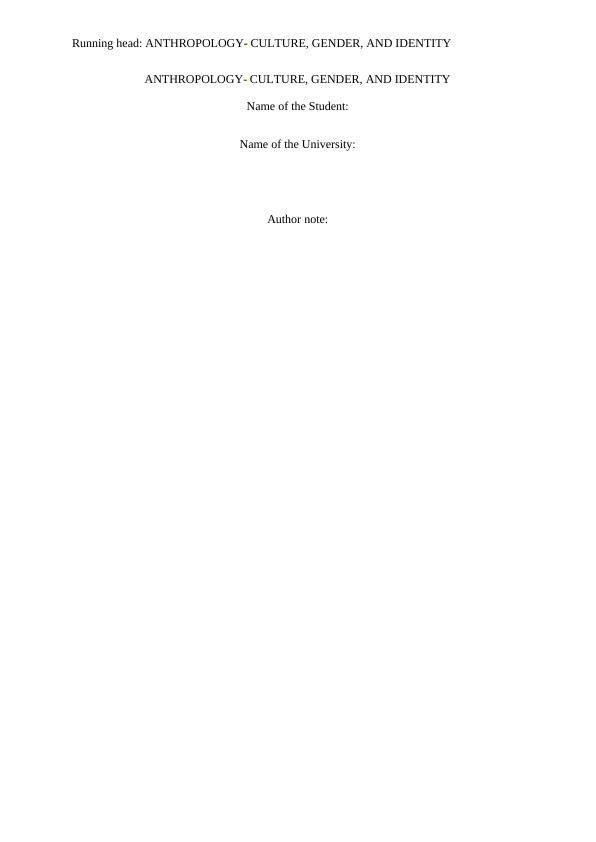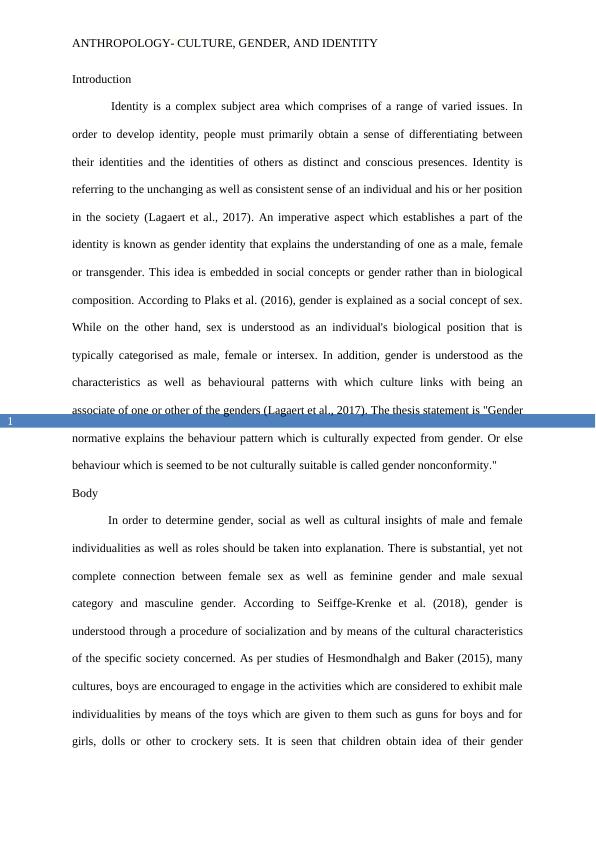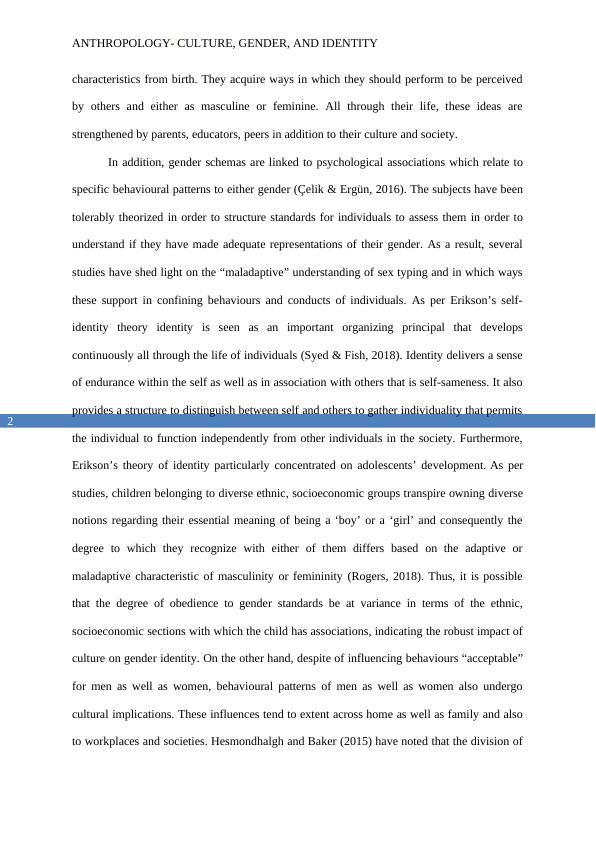Anthropology - Culture, Gender and Identity Thesis 2022
The final assignment for ANTH 101GS06: Introduction to Anthropology is a 6-8 page paper that allows students to reflect on the central concepts and issues of anthropology, including applied anthropology. The assignment should demonstrate the relevancy of anthropological knowledge and perspective in understanding social phenomena and finding solutions to social problems.
Added on 2022-09-18
Anthropology - Culture, Gender and Identity Thesis 2022
The final assignment for ANTH 101GS06: Introduction to Anthropology is a 6-8 page paper that allows students to reflect on the central concepts and issues of anthropology, including applied anthropology. The assignment should demonstrate the relevancy of anthropological knowledge and perspective in understanding social phenomena and finding solutions to social problems.
Added on 2022-09-18
End of preview
Want to access all the pages? Upload your documents or become a member.



